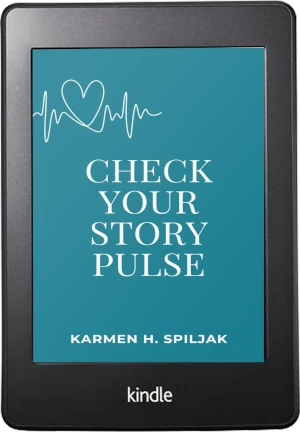It’s one of the most quoted rules in fiction — and one of the most misunderstood. If you’ve spent any time in writing circles, you’ve likely heard it shouted from the rooftops: Show, don’t tell!
And while the advice is valuable, it’s rarely explained in the full. Worse, it’s often served with a side of shame, making writers feel like they’re breaking some sacred literary code every time they summarise a moment instead of dramatising it. So let’s set the record straight.
What ‘Show, Don’t Tell’ Really Means
At its core, this advice is about writing in scene, so placing the reader inside the action as it unfolds. Instead of telling us that your character is a lazy slob who spends their day glued to the telly, you show it:
A character shifting a mountain of laundry off the sofa just far enough to sit down. Feet up on a table cluttered with crisp packets and old takeaway containers. A half-hearted reach for the remote buried under a stack of magazines.
Okay, it’s a bit cliché, but you get the point. The difference between show and tell is akin to having an immersive experience of a dive in a tropical sea to seeing a slide show. So you’re not handing us a neatly packaged label; you’re letting us experience things and draw our own conclusions. That’s the beauty of showing: it invites the reader to become an active participant in the story. To observe, decode, and connect. But here’s where things get murky.
Where the Rule Goes Sideways
Somewhere along the way, ‘show, don’t tell’ morphed into a rigid commandment: Show everything. Every moment. Every reaction. Every turn of the plot. But here’s the thing: you can’t and shouldn’t show it all. Not only is it unsustainable (unless your goal is a 300,000-word epic), it’s also creatively stifling. Sometimes, a quick narrative summary is exactly what your story needs to keep momentum, manage pacing, or set up a bigger moment later on. The real skill lies in knowing what to show.
So… What Should You Show?
Show the moments that matter — the ones that reveal character, emotion, or change. These include:
- Turning points
- Emotional reactions
- Conflicts and decisions
- Clues to your character’s inner world
And perhaps most importantly, show emotion through action, not just through labels. Don’t tell us your character is furious. Let us see the clenched jaw, the pointed silence, the moment they choose to walk away instead of explode. These details carry emotional weight. They make the reader feel something instead of simply registering it.
Because let’s be honest, no one wants to be spoon-fed. Readers want to experience the story, not just hear about it second-hand.
The Bit Most Advice Leaves Out
Here’s where the usual ‘show, don’t tell’ advice really drops the ball: Motivation.
You can show all the beautifully crafted scenes in the world, but if we don’t understand WHY it matters to your character or why they’re doing it, the story falls flat.
Motivation is the heart of emotional engagement. It’s what makes a character believable, relatable, and compelling. And it’s often what makes the difference between an okay scene and a immersive one.
So when you’re deciding what to show, don’t just ask: What happens? Ask: Why does it matter? What does it reveal? What’s pushing this character forward — or holding them back? That’s the heartbeat of great storytelling.
The Takeaway
If you’ve ever felt overwhelmed by this rule, you’re not alone. And you’re not failing.
‘Show, don’t tell’ isn’t a rule to follow blindly – it’s a tool. Use it wisely, and it will deepen your story’s emotional impact. Use it dogmatically, and it might just suffocate your scenes.
So here’s your cheat sheet:
- Show in-scene action when it reveals emotion, motivation or change
- Don’t show everything, only the moments that count
- Tell when you need to keep pacing or cover ground
- Always anchor what you show in your characters’ motivation
Because the real question isn’t if you’re showing or telling? It’s are you making us feel something? And THAT, more than any rule, is what makes a story unforgettable.
Want help bringing more emotional depth and clarity to your novel? That’s exactly what I do. Let’s talk – book a free discovery call.












